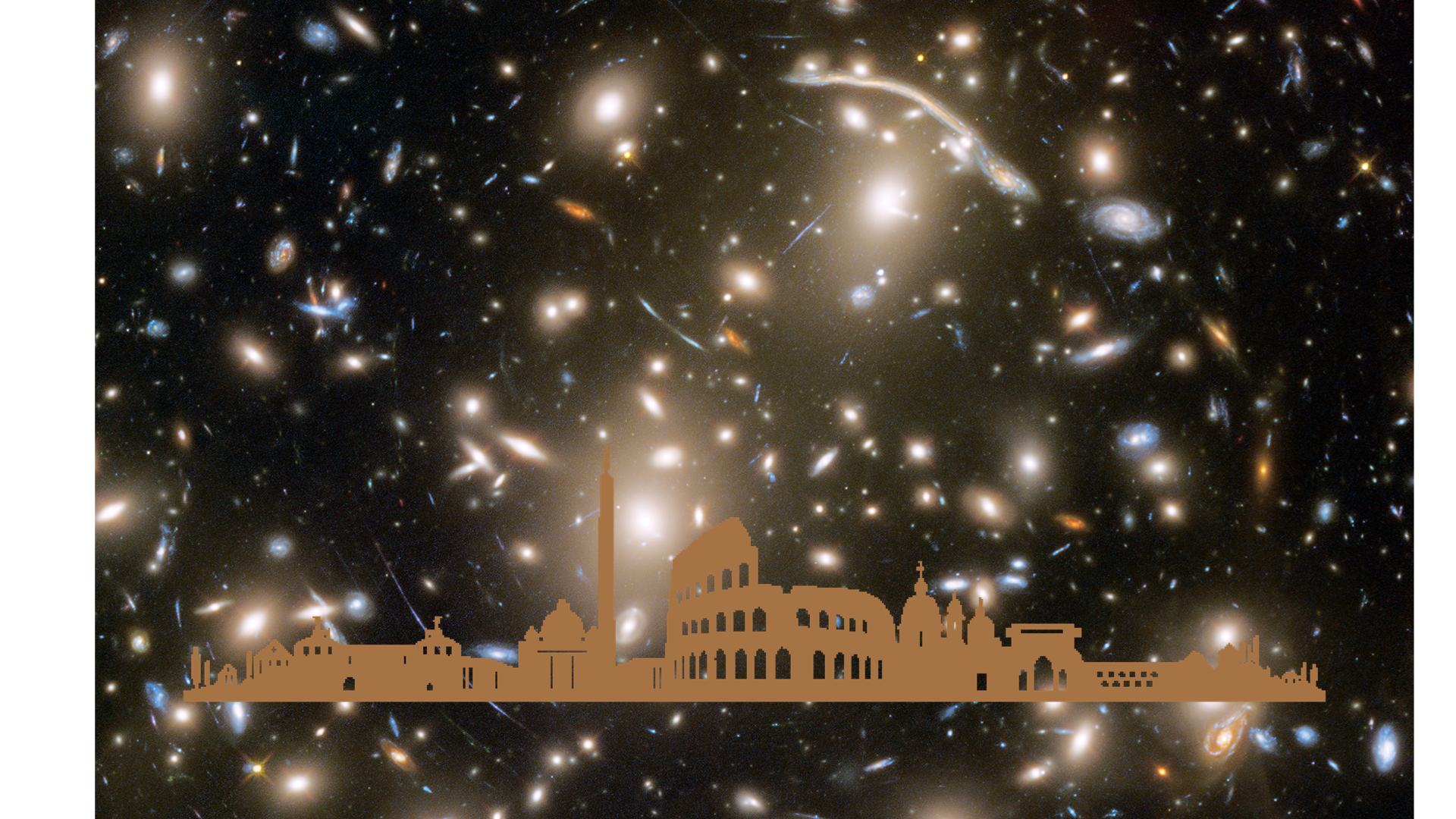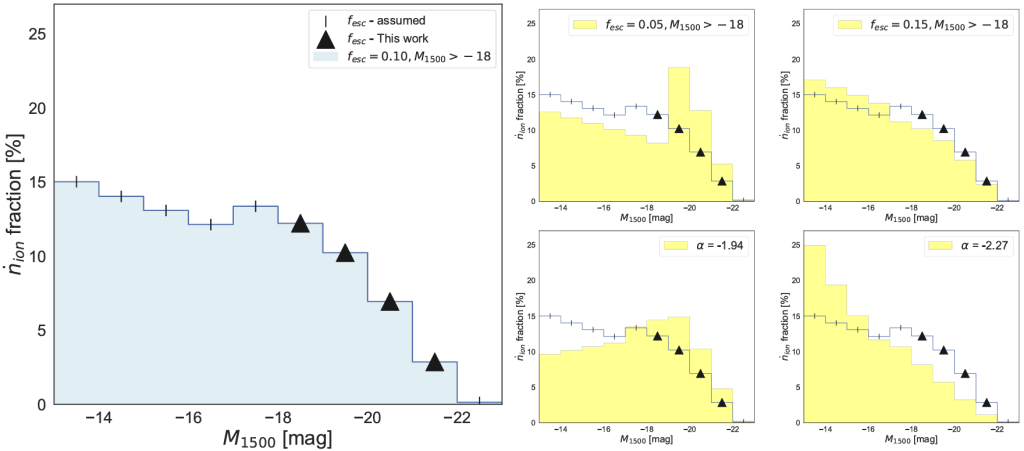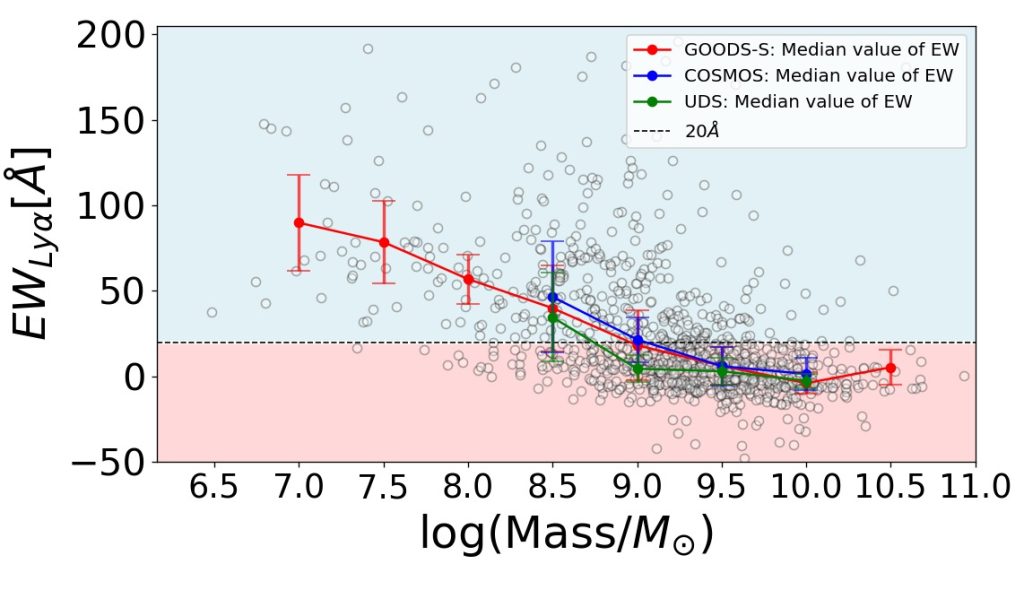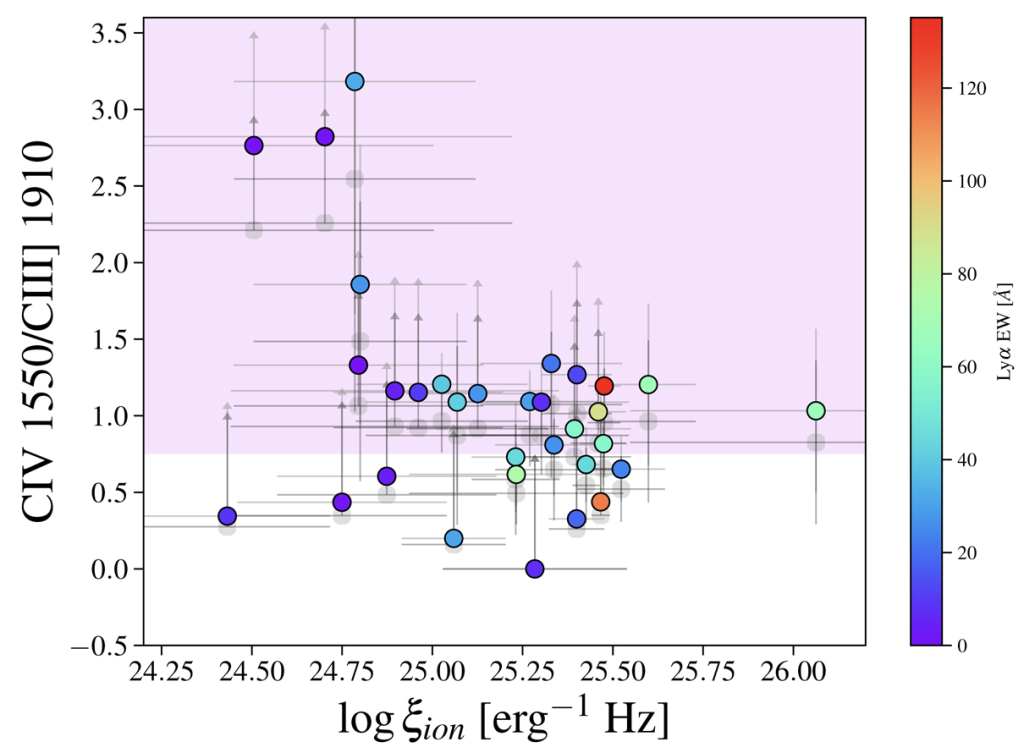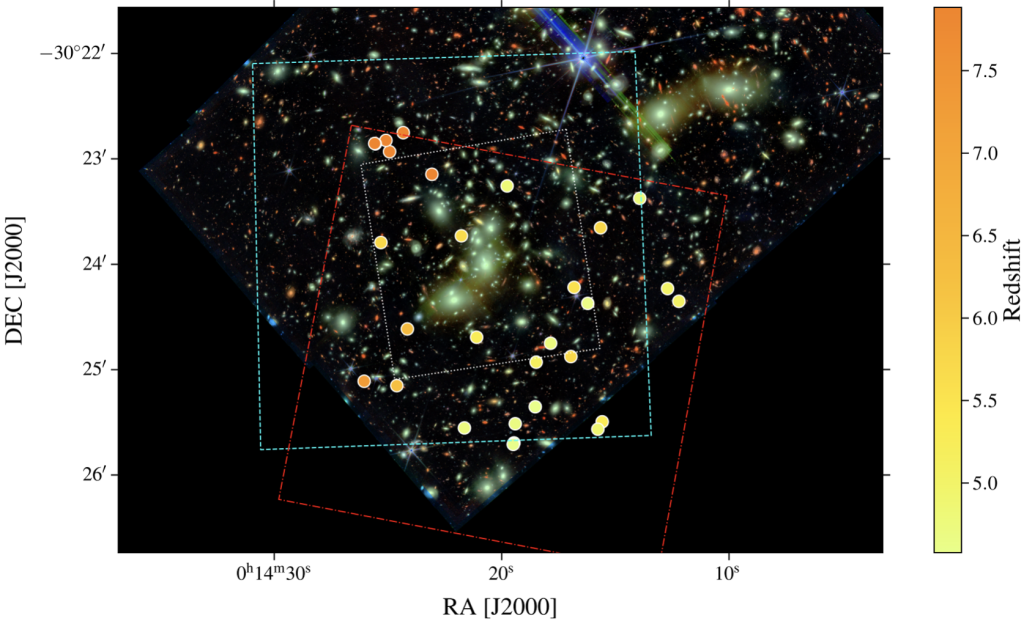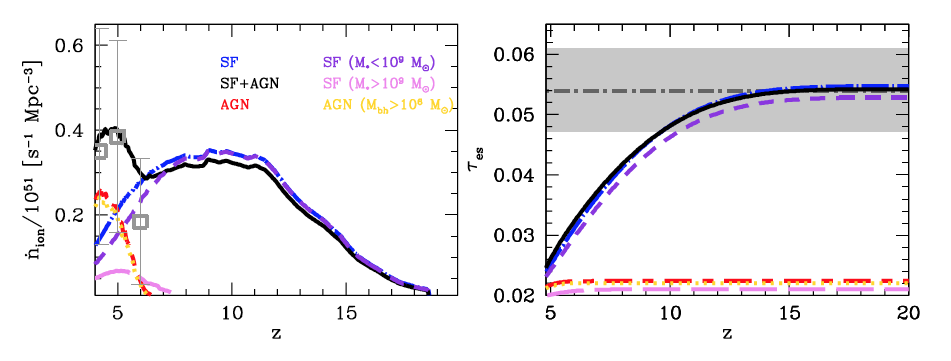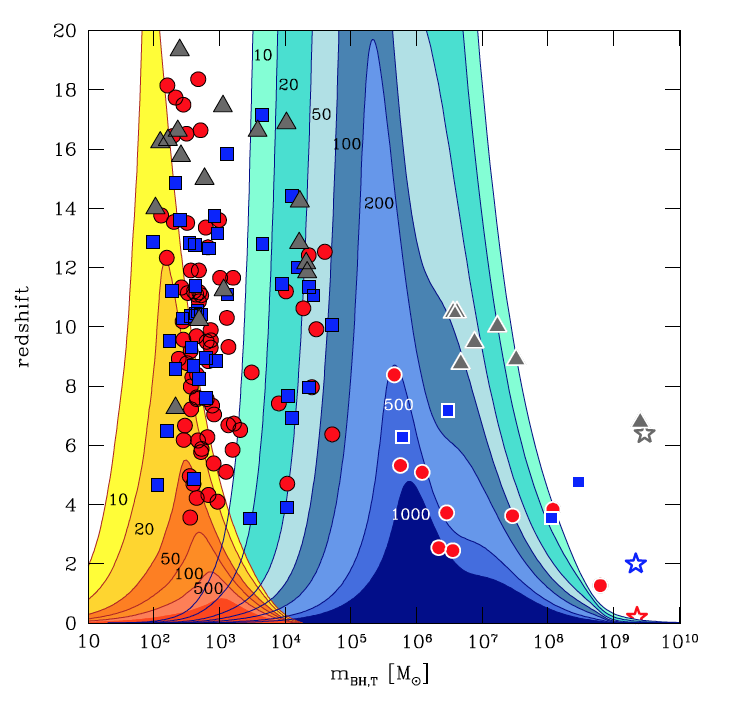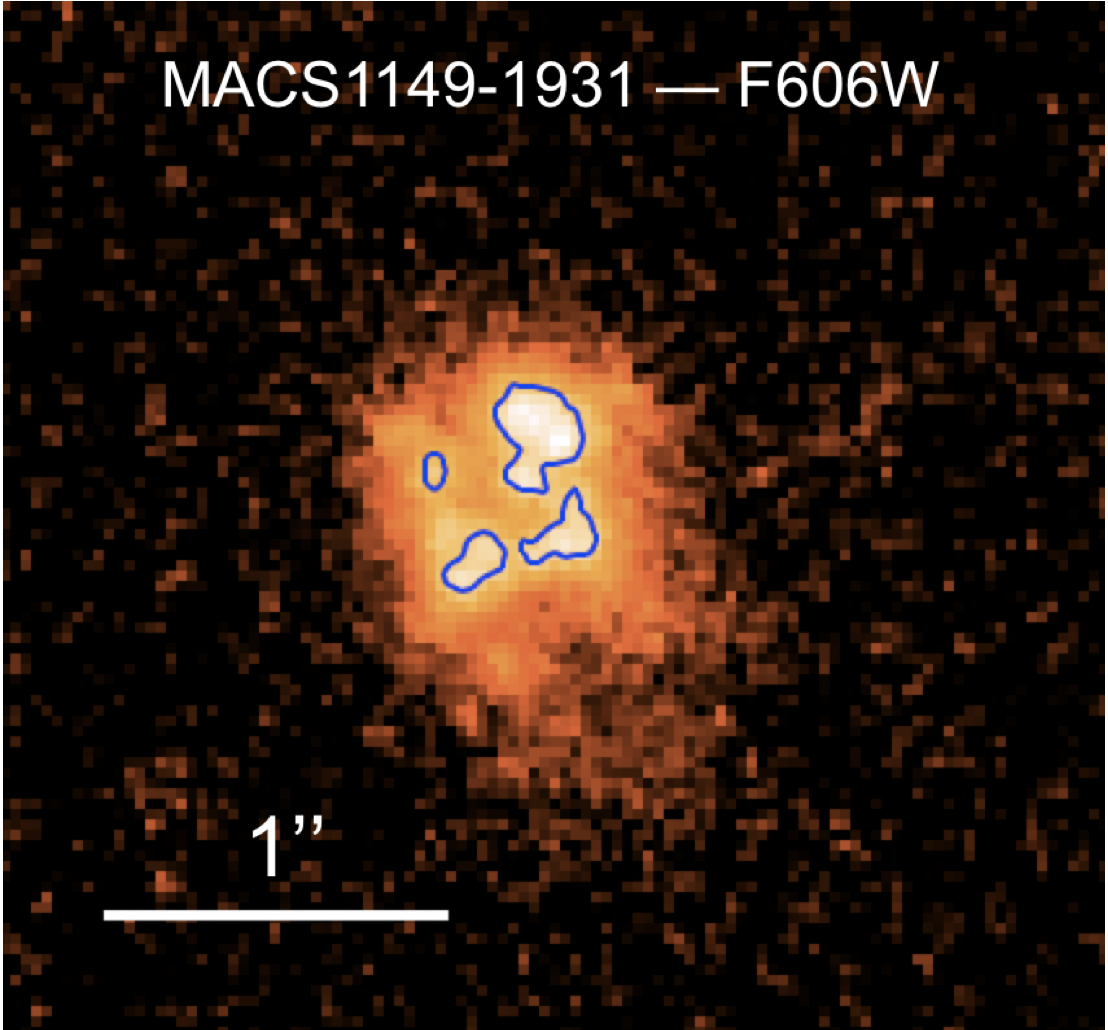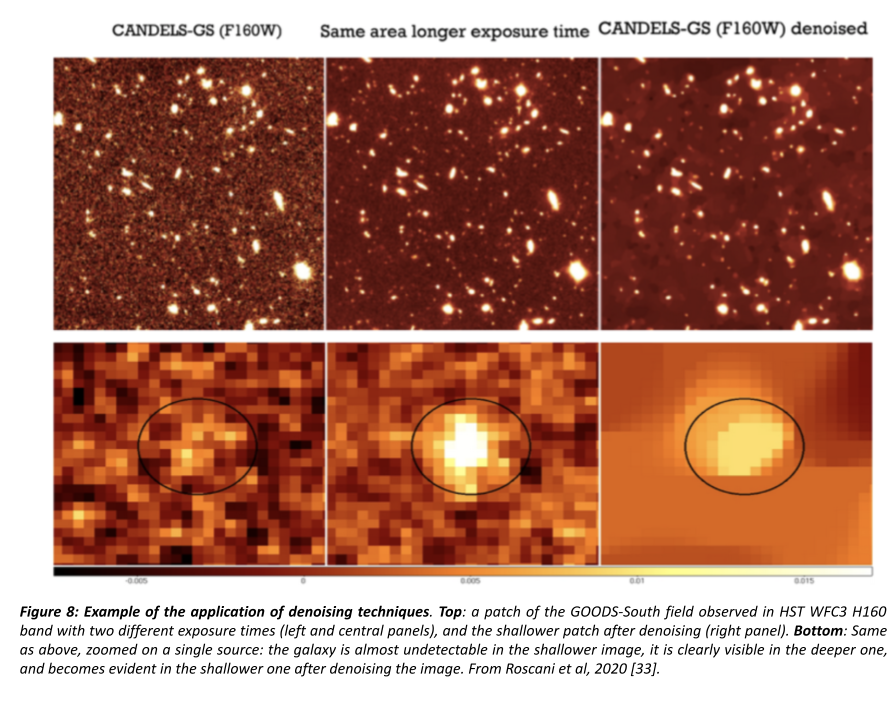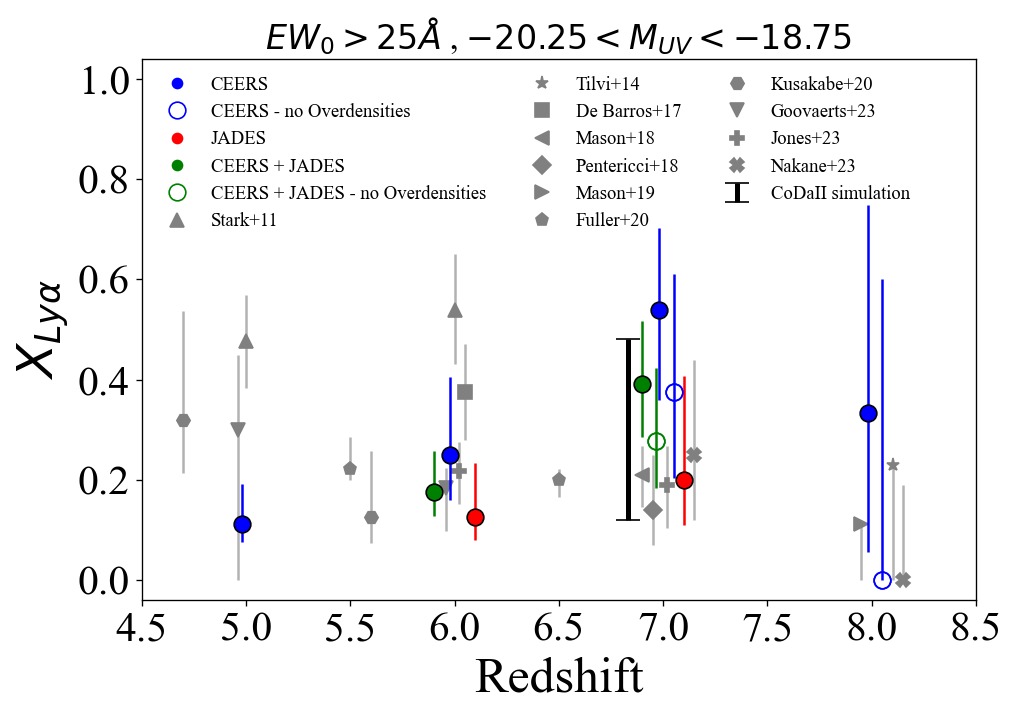
The resonant scattering interaction between Ly α photons and neutral hydrogen implies that a partially neutral IGM can significantly impact the detectability of Ly α emission in galaxies. The redshift evolution of the Ly α equivalent width distribution of galaxies thus offers a key probe of the degree of ionization during the Epoch of Reionization (EoR). Previous in-depth investigations at z ≥ 7 were limited by ground-based instrument capabilities. We present an extensive study of Ly α emission from galaxies at 4 < z < 8.5, observed from the CEERS and JADES surveys in the JWST NIRSpec/PRISM configuration. The sample consists of 235 galaxies, among which we identify 65 as Ly α emitters. We first measure Ly α escape fractions from Balmer lines, and explore the correlations with the inferred galaxies’ physical properties, which are similar to those found at lower redshift. We also investigate the possible connection between the escape of Ly α photons and the inferred escape fractions of LyC photons obtained from indirect indicators. We then analyze the redshift evolution of the Ly α emitter fraction, finding lower average values at z = 5 and 6 compared to ground-based observations. At z = 7 we find a very large difference in Ly α visibility between the EGS and GOODS-South fields, possibly due to the presence of early reionized regions in the EGS. Such large variance is also expected in the Cosmic Dawn II radiation-hydrodynamical simulation. Our findings suggest a scenario in which the ending phase of the EoR is characterized by ∼ 1 pMpc ionized bubbles around a high fraction of moderately bright galaxies. Finally, we characterize such two ionized regions found in the EGS at z = 7.18 and z = 7.49 by estimating the radius of the ionized bubble that each of the spectroscopically-confirmed members could have created.
